
Hey, fellow patriots! Today, on the occasion of Kargil Vijay Diwas I want to take you on a journey to remember and honor those brave souls. They were those who made us all proud in the battle of Kargil. It’s a day that fills our hearts with gratitude and reminds us of the bravery and sacrifice of our soldiers during the Kargil conflict in 1999.
A glimpse of the Kargil War
In 1999, a sinister plot was unfolding in the serene region of Kargil(Jammu and Kashmir). Many were unaware that infiltrators from across the border had stealthily captured strategic heights, posing a grave threat to India’s security. The Kargil War began in May 1999 and lasted for 60 days officially ending on July 26. Local shepherds were the first to alert authorities about the presence of Pakistani infiltrators in the Baltistan district of Ladakh (Kargil Region). The Indian Army established five battalions in the region.
On May 5, Captain Saurabh Kalia and five soldiers from his unit were captured alive by the Pakistani forces and subjected to brutal torture before being killed. The Indian Army moved its troops from the Kashmir Valley to the Kargil sector in May. The Indian Air Force also engaged the infiltrators by the end of May. Fierce fighting ensued from both sides in the Dras, Mushkoh and Kaksar sectors. On June 9, heavy shelling by Pakistan intensified, paving the way for infiltrators to enter Indian territory along with local support.
The heroic acts of our soldiers
Just Imagine – the treacherous terrains of Kargil, freezing temperatures and our brave soldiers, donning their uniforms not only with pride but also with unwavering determination to protect our motherland.In those challenging terrains, our courageous soldiers fought fiercely to reclaim occupied posts. Despite facing adverse conditions, their unyielding spirit filled us all with awe and inspiration.
Key Moment in Kargil War
By mid-May, the Indian Army announced its decision to recapture Kargil district and bring in more troops. The Indian Air Force (IAF) commenced airstrikes on suspected infiltrator positions on 26th May. Unfortunately, on May 27, the IAF lost a MiG-21 and a MiG-27 aircraft to Pakistani missile attacks from their surface-to-air defense systems. Flt. Lt. Kambampati Nachiketa (pilot of the MiG-27) was captured by Pakistani troops and later released on June 3. On May 28, the Pakistani Army shot down an IAF Mi-17 helicopter resulting in the death of four crew members. It was on June 1, the Pakistani Army began heavy shelling on India’s National Highway 1 in Kashmir and Ladakh. The Indian Army recaptured two key positions in the Batalik sector on 9th June. Four days later, after intense fighting with Pakistani soldiers and supported militants, India reclaimed Tololing in Dras.
The heroics on Khalubar Top by Manoj Pandey
Colonel Lalit Rai, commanding officer of 1/11 Gorkha Rifles, was assigned the task of recapturing three critical points – Jubar, Kukarthaam, and Khalubar. After recapturing Jubar and Kukarthaam, Colonel Lalit Rai entrusted Lieutenant Manoj Pandey with the task to advance towards Khalubar, a crucial point for India. Before this, Lieutenant Manoj Pandey had displayed remarkable bravery and strategic acumen while capturing Kukarthaam.
On the night of July 2/3, 1999, Lieutenant Manoj Pandey led his men towards Pahalwan Chowki, located at an altitude of 19,700 feet. As the assault party moved forward, they encountered heavy enemy shelling from both sides. Fearlessly shouting “Jai Mahakali, Ayo Gorkhali,” Lieutenant Manoj Pandey led the charge and cleared two enemy bunkers, one from the right and the other from the left. While tackling the third bunker, he was hit by enemy bullets on the shoulders and legs but he continued to lead the attack. With sheer determination and despite severe injuries, he destroyed the fourth bunker with a grenade. While destroying the fourth bunker he was hit by the enemy bullet in his forehead. Just nine days later of his 24th birthday, on July 3, 1999, Lieutenant Manoj Pandey made the ultimate sacrifice for his country.
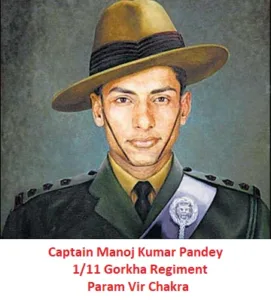
“If death strikes before I prove my blood, I swear, I will kill death!”– Captain Manoj Pandey
Tiger Hill – The turning Point
On the right side advancing forward was the 2nd Battalion Naga Regiment and on the left side was the 8th Sikh battalion moving ahead.
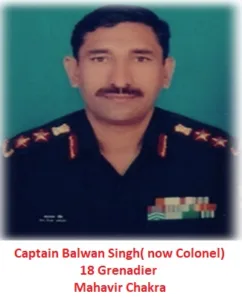
Led by Lieutenant Balwan Singh, 200 men from the Alpha and Charlie companies of the 18 Grenadiers, along with the lethal Ghatak platoon, climbed over a 1,000-foot vertical cliff. They used fixed ropes in a 12-hour long operation in freezing conditions.
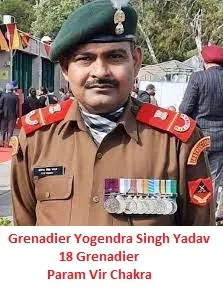
A remarkable contribution was made by Grenadier Yogendra Singh Yadav, who took 17 bullets and played a crucial role in capturing Tiger Hill. He was awarded Param Vir Chakra.
The Valor of Rifleman Sanjay Kumar
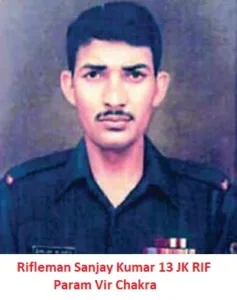
On July 4, 1999, as a member of the 13th Battalion, Jammu and Kashmir Rifles, Rifleman Sanjay Kumar served as the leading scout of the team that captured Area Flat Top during the Kargil War. The area was under the control of Pakistani soldiers. After climbing the cliff, the team came under heavy machine gun fire from an enemy bunker about 150 meters away.
Despite the danger and the deadly effect of the enemy bunker on the ridge, Kumar realized the critical importance of capturing Area Flat Top and bravely proceeded. Despite being shot twice in the chest and arm, he continued the assault on the bunker, killing three enemy soldiers face-to-face. He then lifted the enemy machine gun and moved towards another bunker. The surprised enemy soldiers fled from their positions. Inspired by his action, the rest of the platoon attacked, breached the feature, and successfully captured Area Flat Top.
.
Point 4875: The Victory of Captain Vikram Batra
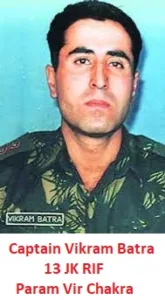
After capturing Point 5140, Captain Vikram Batra was promoted to the rank of Captain. Further, he led his 25 men from Delta Company in the attack on Point 4875 in the Mushkoh Valley. Despite being urged not to proceed due to a narrow gully surrounded by enemy soldiers in broad daylight, Captain Batra decided to lead a direct assault. Displaying extraordinary courage he charged forward surprising the enemy soldiers. During the firefight, Captain Batra got injured but continued the assault with the help of his comrades until he reached the mouth of the gully.
While planning his next move, he saw a fellow injured soldier lying a few feet away. Captain Batra decided to evacuate the wounded soldier to safety. But in doing so, he was hit by a sniper’s bullet. Uttering the regiment’s war cry, “Durga Mata Ki Jai,” which means “Victory to Goddess Durga” he took his last breath. Captain Batra’s exceptional bravery and supreme sacrifice inspired his men, who launched an attack from the gully and captured the objective like true warriors.
The Triumph of Good Over Evil
On July 14, the then Prime Minister Atal Bihari Vajpayee announced the success of Operation Vijay. By July 26, India had recaptured all the posts and declared the victory as Kargil Vijay Diwas, which is not just a celebration of triumph but also a celebration of righteousness over aggression. Our soldiers fought not for victory alone but to save innocent lives and defend the honor of our nation. Kargil Vijay Diwas, reminds us of the tremendous sacrifice made by our soldiers and their families. Many brave souls laid down their lives for us, for our freedom and for the future generations. Their selflessness and dedication are worthy of our eternal gratitude.
Impact on the Global Scenario
At the international level, Pakistan faced severe consequences for involving its army in the conflict. Under the leadership of Bill Clinton President of USA, China, ASEAN countries and the European Union (EU) called on Pakistan to withdraw its forces. Despite the nuclear threat and the intense war-like situation between two nuclear-armed countries, India received praise for showing remarkable restraint and maintaining stability.
Honoring Our Heroes
On this special day, let us come together as a nation and pay our respects to our heroes. Let us remember their names, their stories, and their bravery. While they may not be physically with us, their spirits live on forever. They will keep on guiding us to become better citizens and to uphold the values that make India a diverse yet united nation.
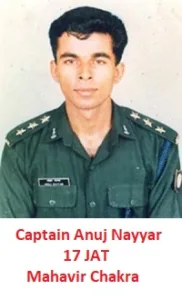
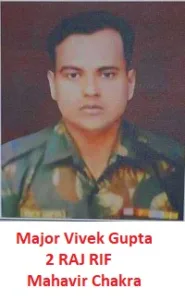

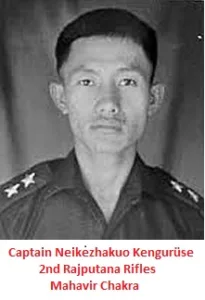
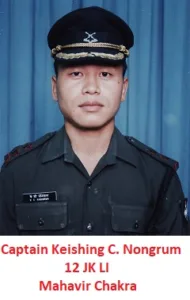
Call for Unity
Kargil Vijay Diwas is not just about the past; it is also about our present and future. It reminds us that our unity is our greatest strength as a nation. Let us stand together, support our armed forces and uphold the values that make India a diverse yet united country.
As we celebrate Kargil Vijay Diwas, let us take a moment to reflect on the sacrifices made by our soldiers. Let us keep their memories close to our hearts. And pledge to be worthy of the freedom they fought so bravely to protect.
Jai Hind!

👍👍👌👌👌